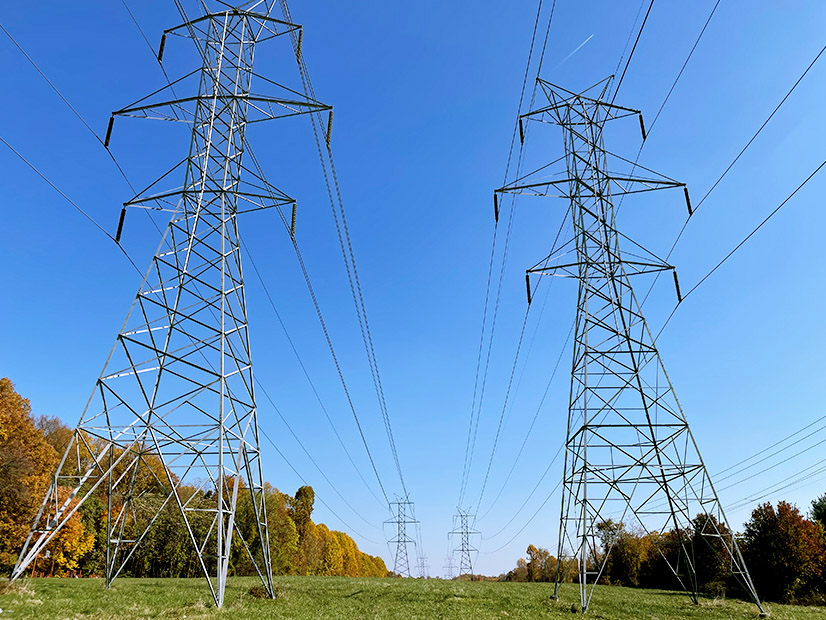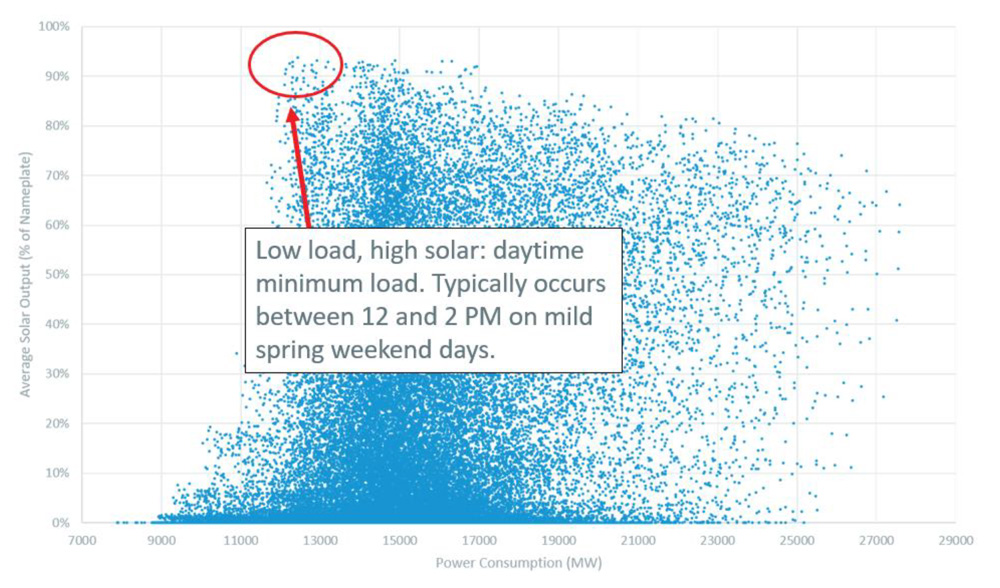
A new study from ISO-NE offers a warning that distributed energy resources equipped with outdated inverters could be a weak link in the region’s grid as it continues to rely more on renewable generators.
A fault on New England’s transmission lines could bring down thousands of megawatts of DERs under certain conditions, with ripple effects that could move into neighboring power grids, the study found.
The study, which commenced in September 2020 as a response to changing conditions and stress on the region’s transmission system and published this month, used a broader lens than many previous reports.
It took a range of four load and solar output conditions (the “four corners” of a scatter plot containing historical daily data) and turned them into six base cases, rather than the more typical consideration of just peak and minimum loads.
Most worryingly, the report found that “significant” amounts of DERs could trip or experience temporary power reduction after a transmission line or transformer fault in the spring weekend midday minimum load case, which involves high solar output and relatively low power consumption.
Those trips could lead to serious impacts on New England’s grid and beyond.
“As much as 1,850 MW of DERs (which is 25% of DERs assumed online) could trip for a fault in New England, which is greater than the current loss of source threshold of 1,200 MW where New England events could begin to impact the New York and PJM systems,” the study says.
 The spring weekend conditions which could cause large amounts of DERs to trip | ISO-NE
The spring weekend conditions which could cause large amounts of DERs to trip | ISO-NE
Up to 5,300 MW of DERs could also go into temporary power reduction, potentially causing “huge power swings within neighboring systems,” even though they would come back to full power output within 10 seconds.
A large piece of the challenge presented in the study is that many of the DERs are what ISO-NE calls “legacy” systems that have older inverters that do not allow them to “ride through” faults.
The RTO tested several mitigation strategies, including replacing those legacy inverters with new inverters, enabling dynamic voltage control on new DERs, turning generators into condensers and reducing solar output. But none of those solutions offered enough improvement in the system conditions to alleviate worries.
“The exposure to this concern is not limited to a small number of hours per year, but is something that must be addressed to avoid reliability concerns under fairly frequent system conditions,” the study says.
The study concluded that there are a number of outstanding questions that need to be answered and additional data collected. Several of them focus on the interregional effects of DERs tripping and whether the current 1,200-MW threshold is low enough.
The RTO’s analysis for other conditions finds fewer reasons for concern. It projects a “number” of N-1-1 high-voltage violations during minimum load conditions, as well as thermal violations for one summer peak case. The study found that the high-voltage violations, caused by a lack of centrally located synchronous generators and lightly loaded transmission lines and transformers, could be addressed by installing five shunt reactors, costing approximately $25 million to $50 million in total.
The thermal violations could be managed by reducing generation by 30 MW in the relevant region (Massachusetts and Rhode Island), the study says.

